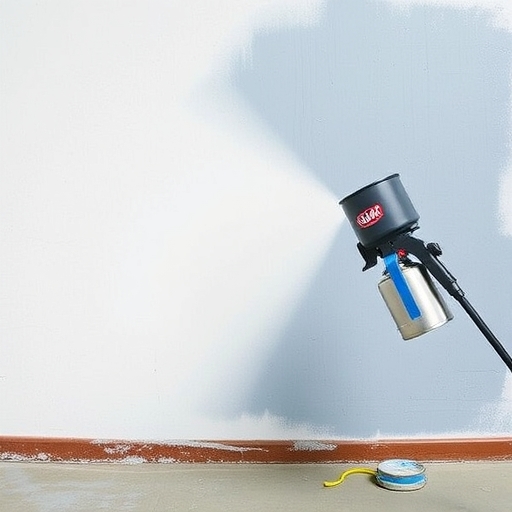How Long Does Spray Paint Take to Dry?
Spray painting is a popular method for applying paint to various surfaces, thanks to its quick application and smooth finish. However, one of the most common questions that arise when using spray paint is, “How long does it take to dry?” The drying time of spray paint can vary based on several factors including the type of paint, environmental conditions, and the surface being painted. In this article, we will explore these factors in depth, provide tips for achieving the best results, and answer some frequently asked questions.
Understanding Spray Paint
Before diving into drying times, it’s essential to understand what spray paint is and how it works.
What is Spray Paint?
Spray paint is a type of paint that comes in an aerosol can. It is designed for quick and easy application and can be used for a variety of projects, including:
- Home decor
- Automotive painting
- Crafting
- Furniture refinishing
- Outdoor projects
- Humidity: High humidity levels can slow down the drying process. Aim for a humidity level below 50% for optimal results.
- Temperature: Ideal temperatures for spray painting are between 65°F and 85°F (18°C – 29°C). Cooler temperatures can prolong the drying time.
- Airflow: Good ventilation can help speed up drying times. Painting in a well-ventilated area can allow the solvents to evaporate more quickly.
- Metal: Dries quickly due to its non-porous surface.
- Wood: May take longer to dry, especially if the wood is untreated and absorbs some of the paint.
- Plastic: Can vary depending on the type of plastic but generally dries quickly.
- Apply Thin Coats: As mentioned, thinner coats dry faster. Aim for multiple light layers rather than one heavy coat.
- Use a Heat Source: A heat gun or hairdryer on a low setting can help to speed up drying times. Keep it at a distance to avoid melting the paint.
- Increase Ventilation: Open windows or use fans to improve air circulation in the area where you are painting.
- Choose the Right Time: If possible, paint during the warmer, drier parts of the day.
Types of Spray Paint
There are several types of spray paint available, each with its unique properties and drying times:
1. Enamel Spray Paint: Known for its durability and glossy finish, enamel paint is often used for outdoor projects.
2. Acrylic Spray Paint: Fast-drying and versatile, acrylic paint is suitable for a wide range of surfaces.
3. Lacquer Spray Paint: Provides a high-gloss finish and dries very quickly, making it ideal for automotive projects.
4. Oil-Based Spray Paint: Offers a durable finish but typically takes longer to dry than water-based options.
Factors Affecting Drying Time
The drying time of spray paint can vary based on several factors:
1. Type of Paint
Different types of spray paint have different drying times. For instance:
| Type of Spray Paint | Drying Time (Touch Dry) | Full Cure Time |
|---|---|---|
| Enamel | 15-30 minutes | 24-48 hours |
| Acrylic | 10-20 minutes | 1-2 hours |
| Lacquer | 10-15 minutes | 24 hours |
| Oil-Based | 6-8 hours | 1-7 days |
2. Environmental Conditions
The environment plays a significant role in drying times. Consider the following conditions:
3. Surface Material
The material you are painting also affects drying time. For example:
4. Application Thickness
The thickness of the paint layer can also impact drying times. Thicker coats take longer to dry. It’s advisable to apply several thin coats rather than one thick coat for a smoother finish and quicker drying time.
Tips for Faster Drying
If you want to speed up the drying process of your spray paint, consider the following tips:
Common Drying Times for Popular Spray Paint Brands
Here’s a brief overview of drying times for some popular spray paint brands:
| Brand | Type | Touch Dry (Minutes) | Full Cure (Hours) |
|---|---|---|---|
| Rust-Oleum | Enamel | 20 | 24-48 |
| Krylon | Acrylic | 10 | 1-2 |
| Valspar | Oil-Based | 6-8 | 1-7 |
| Montana Gold | Acrylic | 15 | 1-2 |
FAQs about Spray Paint Drying Times
How can I tell if spray paint is dry?
You can perform a “touch test.” Lightly touch the painted surface with your fingertip. If it feels dry and does not leave a mark, it is likely dry to the touch. However, full curing will take longer.
What happens if I apply a second coat too soon?
If you apply a second coat before the first coat is dry, it can lead to drips, runs, or an uneven finish. Always follow the manufacturer’s recommendations for recoat times.
Can I speed up drying time with a fan?
Yes, using a fan can help improve airflow and speed up the drying process. Ensure that the fan is not blowing directly on the wet paint to avoid splatter.
Is it safe to spray paint indoors?
Spray painting indoors can be safe if adequate ventilation is provided. Always wear a mask and ensure that the area is well-ventilated to avoid inhaling fumes.
What should I do if my spray paint is taking too long to dry?
If your spray paint is taking longer than expected to dry, check the environmental conditions (humidity and temperature). You may also want to increase ventilation or apply a thin layer of heat.
Conclusion
The drying time for spray paint can vary significantly based on several factors including the type of paint, environmental conditions, surface material, and application thickness. Understanding these factors will help you achieve the best results for your spray painting projects. Always refer to the manufacturer’s instructions for specific drying times, and consider using the tips provided to speed up the drying process when necessary. With the right knowledge and techniques, you can enjoy a beautifully painted surface in no time!

